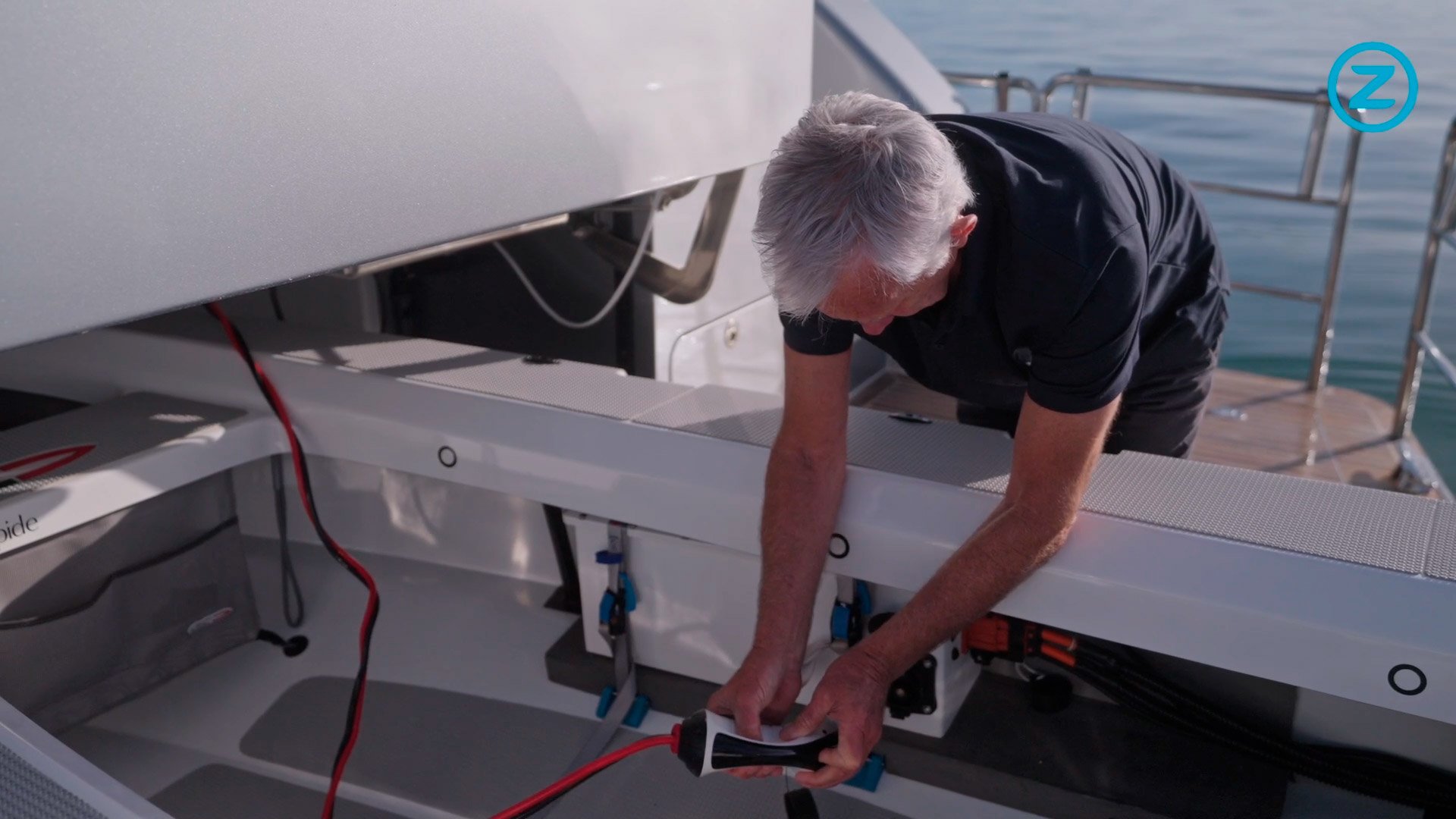Tips on charging and maintaining your ZeroJet electric boat batteries
Electric boats will generally take between 1 to 36 hours to fully charge depending on the vessel. The required time to charge the system varies depending on the energy requirements of the battery and the available charge current output. Charging details can quickly get complex to understand so this article aims to cover key tips you can follow.
Charging times:
There are two factors that directly affect charging times:
1. The state of the battery energy levels.
2. The current which the charger can output.
The higher the amperage which the charger can provide, the quicker the batteries will charge.
Battery stage charging:
There are different stages of the charging cycle which need to be considered:
1. Bulk
The first stage in which the charger identifies the battery and its needs, then applies a high voltage/amperage charge to do the bulk of the charging.
2. Absorption
The battery has reached 80% and 90-95% of its capacity and begins to lower the input current to the battery. This is sometimes known as the "cool-down" cycle.
3. Maintenance
The Maintenance Charge (also known as "trickle" or "float" charge). In this stage, the battery has already reached 95%; the battery charger will continue to apply a steady current until the battery reaches 100% capacity - at that time, the charger will continue to monitor the battery and apply a charge if it detects any loss. By considering these stages you can choose the most appropriate charger. Selecting a charger that outputs the same voltage and current at all times without considering these stages could result in damaged cells if overcharged.
For the ZeroJet system, we have a charger which meets these above requirements and is for both 230V & 110V AC applications. Automatic current control eradicates the need for annoying calculations or manual current adjustments. This means all you need to do is plug the EV style charge plug into the batteries with no further adjustments required.
The ZeroJet charger is small, compact, reliable and IP rated, and with a built-in LCD display on the system, you can see how much charge is required until full.
Taking care of your ZeroJet-powered electric boat batteries
Super B batteries offer some of the most superior battery characteristics in the market. These cells have a lifecycle rating of 3,500 cycles which in theory allows the user to discharge their ZeroJet nearly every day for 10 years before they would need to consider replacing them.
However, having proper battery maintenance will preserve the longevity of your batteries. These are our tips for maintaining your batteries:
Charge the batteries after every use. Don’t allow them to sit below 20% for long periods of time.
Avoid under/overcharging your batteries. We have incorporated safety features in the ZeroJet electrical design to prevent overcharging however it's still important to know this will affect the overall life of the batteries.
Always use the ZeroJet provided charger. Always turn off the charger after the charge cycle is complete.
Don't push your battery to low depths of discharge. A battery that is usually re-charged when it drops to 30% of its capacity will last longer than a battery that is pushed to 10% or less of its capacity on a regular basis.
Check the temperature of the batteries when charging. If excessive heat is noted, stop charging immediately. Do not charge while the battery pack is exposed to direct sunlight or while the boat is in the water (due to the potential movement). Temperature directly affects the voltage needed to charge the battery. In cold climates, more charging volts will be required to reach a full battery. The ZeroJet onboard BMS (Battery Management System) will account for this.
SuperB have a minimum charge temperature of 0 degrees Celsius. If transiting polar waters it is advised to remove the batteries into an internal space for charging above the zero degrees threshold.
If you seasonally store your boat, it’s highly suggested to avoid leaving the batteries in. It’s better to store them safely in a place without extremely hot or cold temperatures, especially over long periods of time.
For storage it is recommended the batteries are charged or discharged to 80% before storing for the winter season or and long periods of no use. All systems should be turned off while the boat is in storage, and the charger disconnected.
Clean battery terminals to prevent salt or dirt build up. Isolating the system and a quick fresh water spray and dry will generally do the trick.
This may seem like a long list but it is cheaper than maintaining a traditional outboard engine! Following these simple steps will help you to get the best performance and lifetime out of your Zero-powered system and batteries. If you have any specific requirements for your vessel charging system don’t hesitate to reach out to us.



